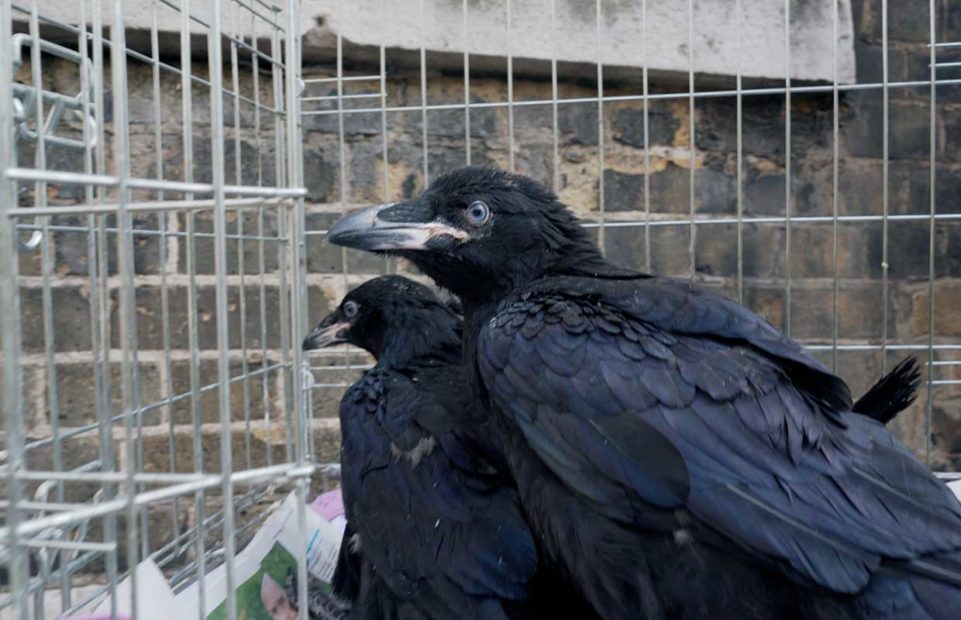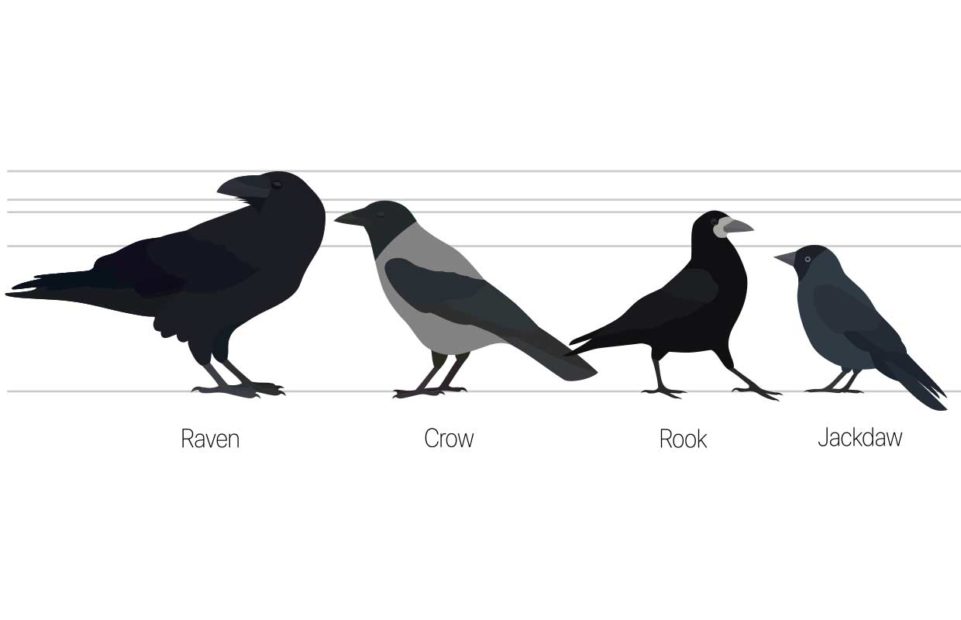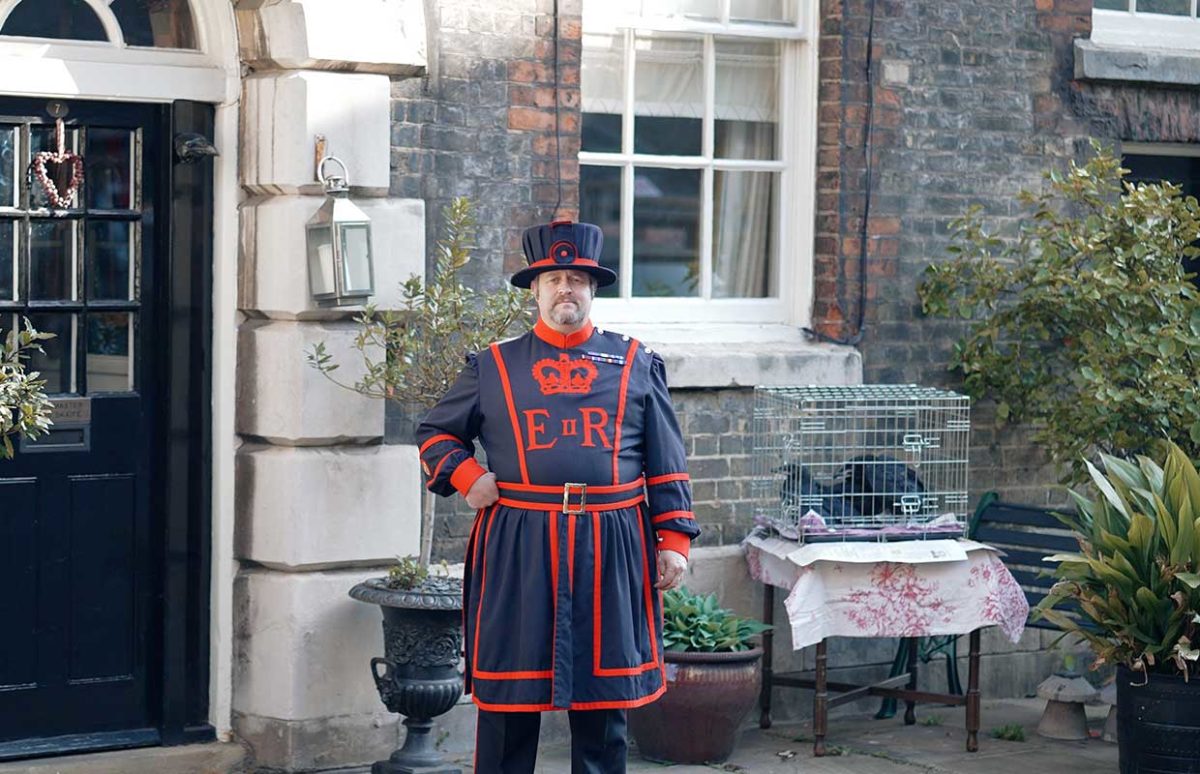The Ravenmaster at the Tower of London is pleased to announce the arrival of four new raven chicks: the birds whose presence legend says protects the existence of the Tower.
The Ravenmaster is one of the Yeomen Warders, informally known as Beefeaters. His role is to look after the Tower's ravens. King Charles II (reigned 1660–85) decreed that there must always be at least 6 ravens in the tower after receiving a prophecy that “If the Tower of London ravens are lost or fly away, the crown will fall and Britain with it…”
In 2019, the Tower began a breeding programme to ensure that there would continue to be ravens, using a breeding pair, Huginn and Muninn, who take their names from the ravens of the Norse god Odin. For the third year in a row, the pair recently had chicks. There are four, two of whom will stay at the Tower, bringing the corvid population to nine. Of the two, a male has been named Edgar after author Edgar Allan Poe's most famous poem "The Raven". (Listen to a wonderfully atmospheric reading by actor James Earl Jones.)
Vote for a Name

Until 19 May, the public can vote for the name of the female chick out from a shortlist of notable women:
Branwen – a deity from Celtic mythology, whose name translates as ‘Blessed Raven’.
Brontë – For the Brontë sisters, Charlotte, Emily and Anne, authors of some of Britain’s best-loved Gothic novels including Jane Eyre and Wuthering Heights.
Florence – For Florence Nightingale, pioneering British nurse and social reformer. As well as having a bird surname, Nightingale kept a pet owl.
Matilda – daughter of Henry I, who challenged unsuccessfully for the English throne in the 12th century.
Winifred– in memory of Winifred Maxwell, who organised her husband Lord Nithsdale’s incredible escape from the Tower of London in 1716 disguised as a woman.
Video Work
You may want to introduce your pupils to the Tower and its ravens using this article.
This 2-minute video is an introduction to the new chicks by Ravenmaster Chris Skaife. He speaks a little fast but he's very used to giving tours of the Tower and has a wonderfully enthusiastic delivery. He especially emphasises numbers (he expected three ravens, got four, two are going to live in the country, two are staying in the Tower, six, seven, nine...) There's also good revision of months.
There is plenty of visual support for what is being said, and if pupils are aware of the context, from A2 they should be able to understand the basic gist. The very first shot, with the Ravenmaster in his full Beefeater uniform, should already provide plenty of opportunity for expression.
Reopening the Tower
The significance of 19 May as the closing date for the naming competition is that it's the day the Tower will reopen its gates to visitors after a 5-month closure due to Covid, the longest since WWII.
This second video imagines what the Tower's conspiracy* of ravens have been getting up to while it has been closed. There's no voiceover, just subtitles "voicing" the opinions of the ravens. Pupils from A1+ could be asked to come up with their own alternative commentary for the images, written or orally, perhaps commentating in the present tense as if it was a "day in the life" feature.
What is a Raven?
We were intrigued about how to define a raven. It's often translated into French as corbeau, but so is "crow". They are in fact members of the same family, corvidus, and mainly vary in size and beak shape from the other common members, in order of size:

* A conspiracy is the correct collective noun for a group of ravens. Slightly less sinister than "a murder of crows", but clearly these birds don't have the most positive reputation in the folk memory!
Tower of London
Reopening to the public 19 May 2021
 If you would like to do more on the Tower of London, there are three audio files with interactive activities in the BRNE anglais cycle 4 to help you (levels A1+ and B1).
If you would like to do more on the Tower of London, there are three audio files with interactive activities in the BRNE anglais cycle 4 to help you (levels A1+ and B1).
Copyright(s) :
Historic Royal Palaces
Dom Uccello/Shutterstock
> A Virtual Visit to Buckingham Palace
> Audio Resources for the Tower of London
Tag(s) : "British culture" "British history" "history" "London" "ravens" "Thumbs Up 6e" "Tower of London" "videos"





